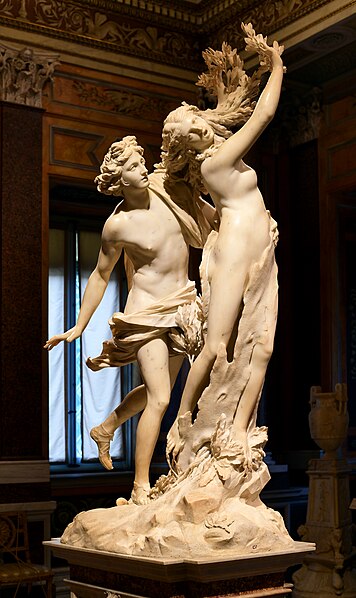Apollo and Daphne is a transformation myth. No written or artistic versions survive from ancient Greek mythology, so it is likely Hellenistic in origin. It was retold by Roman authors in the form of an amorous vignette.
Roman, Apollo and Daphne, c. 62–79 A.D., fresco from South wall of Casa dell’Efebo, Pompeii showing Apollo holding a sprig of laurel, while Daphne is perhaps dancing. It likely reflects a pre-Ovidian source.
Peter Paul Rubens – Apollo and the Python, 1636–1637
Gian Lorenzo Bernini's Apollo and Daphne.
Apollo and Daphne, fresco from Pompeii, 1st century
The Metamorphoses is a Latin narrative poem from 8 CE by the Roman poet Ovid. It is considered his magnum opus. The poem chronicles the history of the world from its creation to the deification of Julius Caesar in a mythico-historical framework comprising over 250 myths, 15 books, and 11,995 lines.
Page from the edition of Ovid's Metamorphoses published by Lucantonio Giunti in Venice, 1497
Title page of 1556 edition published by Joannes Gryphius (decorative border added subsequently). Hayden White Rare Book Collection, University of California, Santa Cruz.
A woodcut from Virgil Solis, illustrating the apotheosis of Julius Caesar, the final event of the poem (XV.745–850)
A depiction of the story of Pygmalion, Pygmalion adoring his statue by Jean Raoux (1717)








